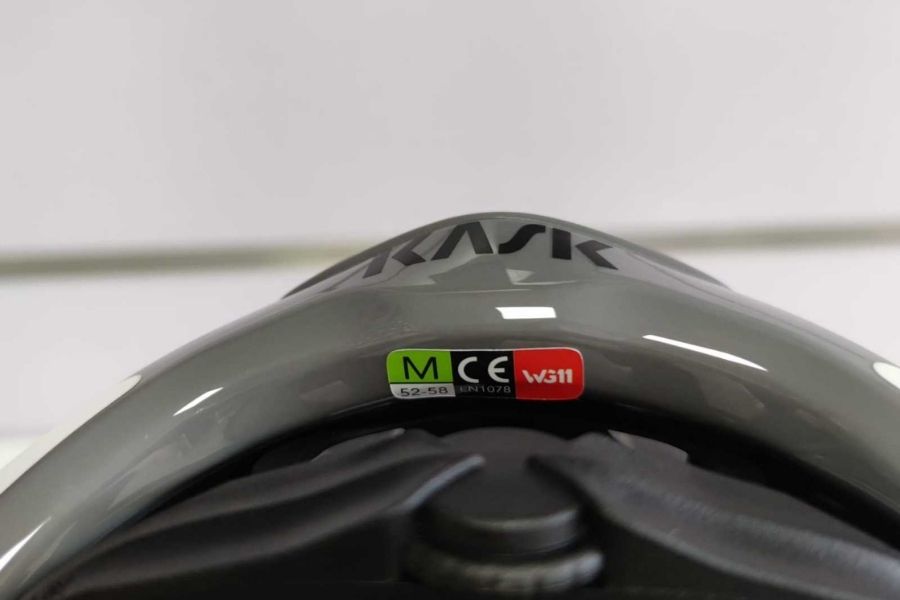 However cheap, a homologated helmet will always offer adequate protection, but will have limited specifications. Obviously, a € 30 helmet will never offer the same benefits as a € 600.
The type of helmet Ideal for you It will depend on the cycling modality that you practice and your pedaling style. It is even possible that you need more than one if you develop in various disciplines.
However cheap, a homologated helmet will always offer adequate protection, but will have limited specifications. Obviously, a € 30 helmet will never offer the same benefits as a € 600.
The type of helmet Ideal for you It will depend on the cycling modality that you practice and your pedaling style. It is even possible that you need more than one if you develop in various disciplines.
How to choose a bicycle helmet adapted to my needs?
There are many factors that can make the difference between a simple helmet and Your helmet. The combination of all of them, to a greater or lesser extent, will determine your purchase decision. Do you want to know the ten most relevant?- Size of the helmet. It is a basic aspect to correctly fulfill its function.
- Ventilation of the helmet, determined by its design and the openings for air circulation.
- The retention and adjustment system, conditioned by the hull regulator in the neck and the front closure under the chin. An adequate combination of both prevents the helmet from moving. In recent times, they have emerged novel formulas. For example, magnetic buckle Fidlock, which facilitates the closure, even with some winter gloves. Also, the Rear adjustment with boa o Detada roulette wins in versatility in high -end helmets. Either lose sight of Casco's straps or ribbons: There are different textures and thicknesses. Some allow a regulation in the ears area to save them and get an ideal adjustment.
- The textile fabric padding that covers the interior of the helmet. In many cases, it has spare parts, which allows to maintain good hygiene. This element is linked to another primary aspect: Ergonomics of the helmet or its ability to adapt to the shape of your head. You should feel that it adjusts as a glove.
- The weight of the helmet and aerodynamic construction. It is a very important issue in competition, and relevant to the amateur cyclist. Above all, if we talk about road cycling. Thus, a helmet Around 300 gr It can be a good cost-benefit balance. Surely, your cervical ones will appreciate it. Nothing to do with other modalities, where lightness plays a secondary role. Thus, a standard MTB comprehensive helmet can move in about 1,000 gr, and even more.
- Inclusion, or not, of protection systems Faced with the impact (such as the MIPS and other similar ones, which we will talk about later).
- The visor, removable or not, especially associated with mountain cycling. Although there are cyclists who question their usefulness, it has various functions: Protect from the sun, mitigate the impact of branches on the face and prevent rain from falling directly on glasses.
- The core of the helmet. It is the element destined to directly absorb impacts. It is usually manufactured in Expanded polyserane (EPS): similar to cork Packaging white, but much more compact. In recent times, technologies have reached the market such as Koroyd, a complementary material that provides extra ventilation and absorption capacity to the EPS.
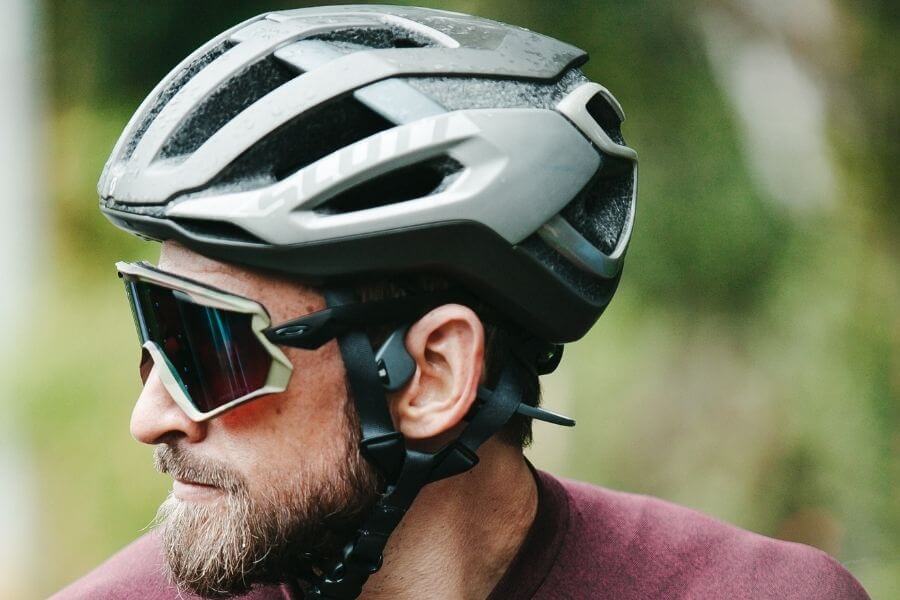
- The external plastic housing (or shell). It is usually polycarbonate, although carbon fiber or fiberglass is also common. In low helmet ranges, it usually adheres to the core with glue and with use can be detached. In medium and high ranges, they form a unique structure that provides more resistance and lightness. Is what is called construction In-Mold.
- Finally, do not forget about Helmet style and aesthetics. Although it is not the most important thing, helmets have become a more cycling fashion complement.
When should I replace my bicycle helmet?
Suppose you have been in the cycling for some time and you ask yourself the big question: is the time to change my helmet?Change the helmet for use
Some manufacturers recommend replacing it every five years; Others, every three. There is no single criterion. In any case, we always refer to helmets that have not suffered any impact. In case of accident, the story changes. The argument is that the core of the helmet receives blows and pressures as a result of everyday use. Over time, these micro -impacts cause a Loss in the volume of EPS, limiting its ability to absorb energy in case of severe fall. On the other hand, ultraviolet light of the sun, heat and sweat can contribute to the deterioration of the material. Anyway, a bicycle helmet does not degrade overnight. Of course, a certain prevention It can help you prolong your useful life.
If you take it on a trip, protégelo and avoid putting it under pressure in the suitcase. When you return home on a route, keep it in a padded bag. It also avoids applying any type of solvent and adhesive. Present extreme temperatures and do not drop it or throw it in any way.
Anyway, a bicycle helmet does not degrade overnight. Of course, a certain prevention It can help you prolong your useful life.
If you take it on a trip, protégelo and avoid putting it under pressure in the suitcase. When you return home on a route, keep it in a padded bag. It also avoids applying any type of solvent and adhesive. Present extreme temperatures and do not drop it or throw it in any way.
Should I change your helmet after an accident?
A different thing is to suffer a fall. Yeah You land with the head, You should replace the helmet. Without hesitation. In fact, EPS's core is designed for a single impact. If it deforms, you will not offer you proper protection in case of a second accident. Let's touch wood. Do not trust the external appearance, since the helmet can be damaged and have internal fissures. The exterior housing could hide them. If so, the helmet could easily break with an impact on the same area.
[IRP posts = "3108" name = "What to do in case of an accident with the bicycle"]
Do not trust the external appearance, since the helmet can be damaged and have internal fissures. The exterior housing could hide them. If so, the helmet could easily break with an impact on the same area.
[IRP posts = "3108" name = "What to do in case of an accident with the bicycle"]
How to choose the correct size for my bicycle helmet?
When you buy a bicycle helmet, make sure it adapts perfectly to your head. It is essential to fulfill its function in an impact, and also for your comfort. As with the stature of your bicycle, choose a helmet appropriate to your physiognomy. [IRP posts = "87" name = "How to choose the correct bicycle size"] The carving From the helmets it varies between brands and each one makes the war on their own. Frequently, low -end helmets are unique. Many brands have sizes that correspond to the perimeter of the circumference of the head (calculated in centimeters). For example, helmets of size 52 to 56, etc. Other manufacturers offer a Type S, M, L scale, which have their equivalence in centimeters. Let's give the example of a Met brand model: the Thirty mips of road. This helmet is presented in small size (s), median (m) and large (l). Each corresponds to measures of 52-56 cm, 56-58 cm and 58-61 cm, respectively. There are tables that establish such correspondence on the manufacturer's website.How do you calculate the bike helmet that corresponds to me?
Know your measures to succeed with the carving it's simple. Simply, take measured tape and place it on your forehead: approximately, 2 fingers above your eyebrows. From there, it measures the your head circumference, passing the tape over your ears.It is about calculating the greatest possible circumference that you can draw around your skull.Make sure the tape measure is well adjusted and Repeat the process several times for a precise result. This measure is what the brands use to define their sizes. When you make your calculations, you can use the following table as a guide. But remember to consult the measures of each manufacturer, since there is no standard.
| Size xs | Sizes | Size M | Size L | Size XL | |
| Head circumference | 47-51 cm | 51-55 cm | 55-59 cm | 59-63 cm | 61-65 cm |
What do I do if I am between two sizes?
Faced with the doubt, it is preferable that you buy the smallest size, provided that it allows you a small margin of adjustment. But if you feel that the helmet squeezes you, discard this option without hesitation. Keep in mind that pedaling conditions They are changing throughout the year. Your hair volume can vary, you could use a sotocascasco, a cycling cap, etc ... Another less known appearance is that the volume of the head It tends to increase slightly when we make intense efforts. In general, a baggy size tends to be worse. You can force you to tighten the adjustment roulette of the account to get the search. And many times, not even those.
Protection technologies
In recent times, helme brands have introduced technologies that provide a security plus. These developments began integrating In high ranges, but today you can enjoy them in many average price models. Do you want to know the most relevant?Bicycle helmets with MIPS technology
Technically, MIPS is a protection system against multidirectional impacts. Protect the brain from drag rotation that the head suffers in a fall. To do this, the helmet is manufactured with a Internal membrane of polycarbonate, which is between the head and the core of EPS. This element, whose weight adds only 30 or 35 gr to the set, moves regardless of its structure.When you try a helmet with MIPS technology, you will notice that it swings slightly when applying strength on it.Specifically, it allows a head sliding 10-15 mm with respect to the helmet in any direction. By having two independent layers, the violence of a possible impact dissipates inside the helmet, reducing the risk of brain damage. In a way, it is a mechanism similar to that of work helmets.
With this video you can know the concept MIPS in depth. [embed] https://www.youtube.com/watch?v=Goe9x7yvbio[/embed]
Progressively, the MIPS system is implanted in mid -range helmets. Below € 100, almost any cyclist can enjoy units equipped with this technology. It is, practically, A prevention standard, although there are brands that use different names to call this type of technology. Known is the Wavecel system Trek patented, the AIP technology (Armourgel Impaction) of Spiuk, or the SPIN SYSTEM of Poc, to give some examples. In short, different ways to name a similar technology. [IRP posts = "998" name = "Can a cycling hull become a work of art?"]
Bicycle helmets with angi technology
On the other hand, there are helmets that have Shock sensors. One of them is the Angi system, created by Specialized, but applicable to almost any helmet. It is a device that connects to your smartphone Through an application and launches an automatic help signal if you have a mishap. When the sensor interprets that you have suffered a serious blow, send An alert to the mobile. The phone then begins a countdown. If you do not stop it, the application will send a message of help with your location to the previously defined emergency contacts.In a way, Angi is like a friend who wants to make sure you are well.The system also connects with Strava. The only paste is that it forces to have the battery of the mobile loaded and check if there is any point on our route where we can lose coverage. We already know the general aspects to have an account to buy the best bicycle helmet according to our needs. Let's see some now particularities based on your cycling discipline. The differences between hulls for road bicycles and MTB mountain bikes can become huge.
Choose road bike helmet
Currently, road bicycle helmets are versatile, so they are made to fulfill their function in diverse disciplines, including the Cross-Country (XC), the most version Light of the MTB. These are especially light and multiple helmets Openings so that your head breathes when you give everything on the asphalt. The ranks of the range are Ultraligeros, but you know: the weight of a helmet is inversely proportional to the price. And a higher cost is also associated with more comfort, more ventilation and more attractive design. Orientatively, from 100-120€ You can already find really interesting road helmets.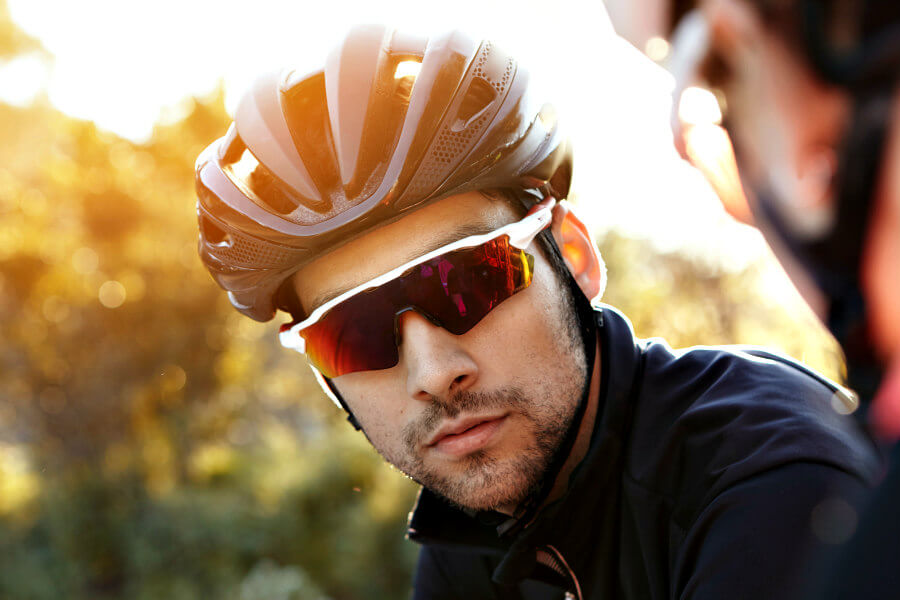 High -end models usually have a Aerodynamic profile polishing to minimize wind resistance and improve your performance.
Let's say that these classic road helmets, with more or less technology, are the most demanded.
High -end models usually have a Aerodynamic profile polishing to minimize wind resistance and improve your performance.
Let's say that these classic road helmets, with more or less technology, are the most demanded.
Aerodynamic road helmets
Within this segment you can also find Aero and semi-aero helmets. As the name implies, they are road helmets with a more aerodynamic approach. On the other hand, they are heavier and less ventilated. In fact, those of type Aero They almost completely dispense with openings for air circulation. Professionals usually use them in flat stages, and are common in Duatlones and triathlons. Being more closed, it is more common to see them on winter or unstable time.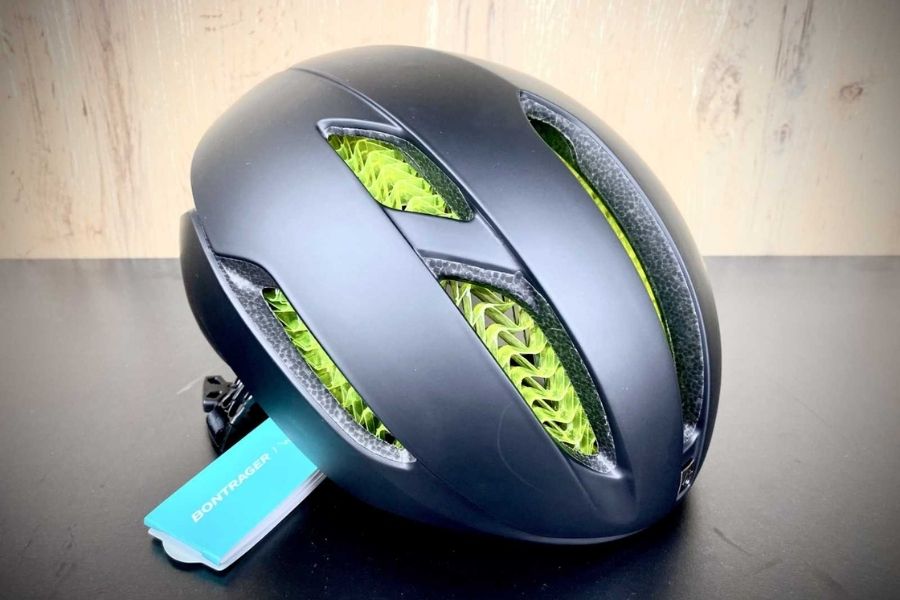 One more step in this line are the counterreloj helmets or those focused long distance. They are the ones who use professional cyclists and triathletes who compete in tests of Hombre de Hierro and Ultraman.
Some of these helmets narrow like a tear on the back, in the search for Maximum aerodynamic coefficient. Other aspects, such as ventilation or aesthetics, remain in the background.
One more step in this line are the counterreloj helmets or those focused long distance. They are the ones who use professional cyclists and triathletes who compete in tests of Hombre de Hierro and Ultraman.
Some of these helmets narrow like a tear on the back, in the search for Maximum aerodynamic coefficient. Other aspects, such as ventilation or aesthetics, remain in the background.
Choose MTB mountain bike helmet
If yours is the mountain bike, the adoption of one type or another of the helmet will be based on LA aggressiveness in your pilot. Nothing has to do with the XC with the descent (Downhill). If the bikes dedicated to each discipline are very different, the same can be applied to the helmets.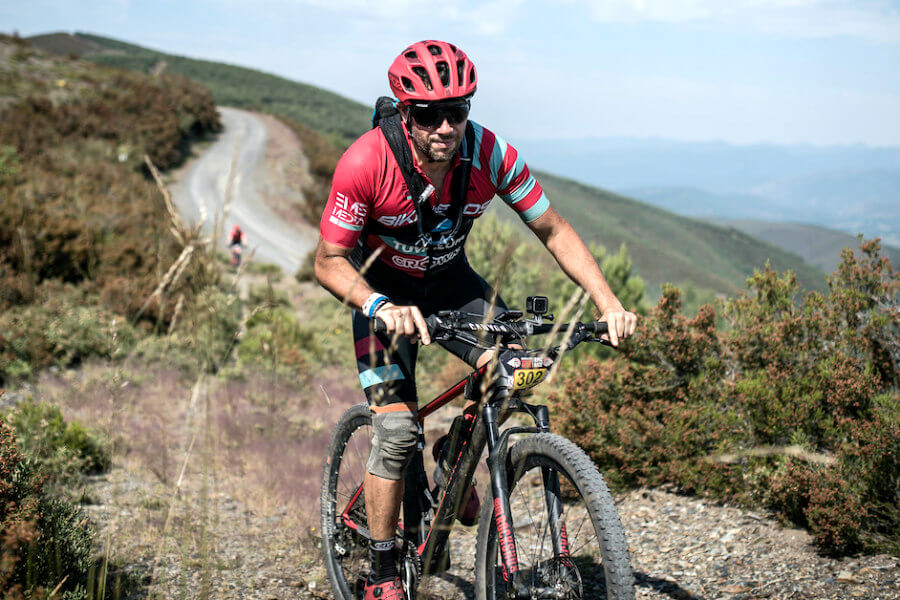 You must also contemplate possible Additional features You want to integrate into your helmet. There are more and more MTB practitioners looking for helmets prepared to install a type action chamber GoPro or a light focus for night outings, for example.
Another issue to consider is the visor of the helmet. Analyze the ease with which this element is separated in case of fall. Some helmets have movable visors and others carry them standard.
An advantage of a visor Quita and Pon It is that, in case of an accident, it will not be an element that compromises your security, since it will be fired to the slightest impact.
You must also contemplate possible Additional features You want to integrate into your helmet. There are more and more MTB practitioners looking for helmets prepared to install a type action chamber GoPro or a light focus for night outings, for example.
Another issue to consider is the visor of the helmet. Analyze the ease with which this element is separated in case of fall. Some helmets have movable visors and others carry them standard.
An advantage of a visor Quita and Pon It is that, in case of an accident, it will not be an element that compromises your security, since it will be fired to the slightest impact.
Casco for Bicycles of XC, Enduro, Trail and All-Mountain
If your specialty is closer to Cross country (XC), we have already pointed out that a light road helmet can be perfect. Comfort and ventilation are important issues because it is normal for the routes to be extended. And if you practice Marathons, even more. These helmets usually come with a small visor that you can easily attach when venturing by clues and trails. If you already go into the enduro, you will look for more protection. The same can be applied to modalities such as Trail and the All-Mountain. The discipline itself forces you to do so, since the risk and speed multiply. You must look for a helmet with extra safe.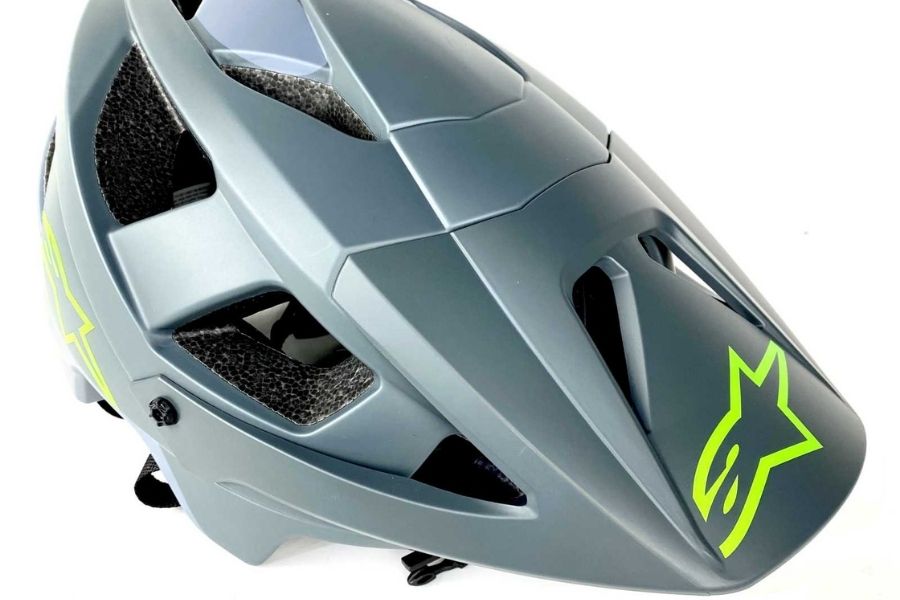 As a starting point, we talk about Mixed helmets, those located halfway between the helmets conventional and those of maximum protection. They have one Occipital protection (neck) lower and reinforced than the first. They are more compact and with fewer openings than a helmet focused on the XC, and have a longer adjustable visor.
In this segment there are also security levels, since protection can be extended to Temporary zone of the skull (temples), leaving in sight a small opening for the ear. And it is that in this discipline you must pilot with all the alert senses.
As for the price, for 80-90€ You can already access models with good performance.
The more risk and speed add your outputs, the more radical your helmet should be. In this way, we would enter the world of Integral helmets either full face.
As a starting point, we talk about Mixed helmets, those located halfway between the helmets conventional and those of maximum protection. They have one Occipital protection (neck) lower and reinforced than the first. They are more compact and with fewer openings than a helmet focused on the XC, and have a longer adjustable visor.
In this segment there are also security levels, since protection can be extended to Temporary zone of the skull (temples), leaving in sight a small opening for the ear. And it is that in this discipline you must pilot with all the alert senses.
As for the price, for 80-90€ You can already access models with good performance.
The more risk and speed add your outputs, the more radical your helmet should be. In this way, we would enter the world of Integral helmets either full face.
Integral helmets suppose a huge leap in safety, at the expense of more weight and less ventilation.Some of these helmets, especially in their less extreme version, have Lies or Morreras (Protections for the jaw) Removable. In this way, you can turn your Enduro helmet into a lighter helmet. It is very useful when you go through ascent sections and need extra ventilation. In a way, it allows you to have two helmets in one: One to go up and another to go down. They are known as hybrid or modular helmets. Another advantage is that some models have replaceable lie. You can acquire this piece separately in case you suffer from an accident, with the consequent savings. It is something to consider, since these are helmets expensive, with good options from some 150€.
Descent bicycles (Downhill)
If yours is to launch yourself by the earrings, your ideal option is a full helmet. It is designed to protect head and face. Unlike other models focused on enduro, the lie is not removable. In short, they are maximum security helmets. They are helmets that remind a lot of motocross, but much lighter and not approved for that discipline, obviously.
They are helmets that remind a lot of motocross, but much lighter and not approved for that discipline, obviously.
If you are thinking of trying your skills in a Bike Park, the integral helmet will be mandatory.100% integral helmets are robust and offer almost total protection. They barely have ventilation routes and can cost you to get used to them. Let's say they are not the most comfortable in the world, but the safest. For about 70-80€ You can get one of guarantees. Some models do not allow the same adjustment in perimeter and height as the helmets of other disciplines. Therefore, they have a internal padding destined to fulfill this adjustment function. [Captation Id = "Attachment_7308" Align = "Alignnone" Width = "900"]
 Image: John Stelios / Pexels[/caption]
They usually come with Various foam densities. They can be combined for a better adjustment and are usually made to the proof of bacteria and bad odors. A chin strap will help you complete an optimal coupling. Finally, a height adjustable visor will allow you to fit the glasses when you do not wear them.
Can you use this type of helmet in less extreme disciplines? Yes, but in that case you should look for a Specific comprehensive helmet for enduro, which usually has more ventilation openings. In fact, the use of comprehensive helmet in the enduro modality is a trend In clear growth.
In conclusion, and regardless of tastes and budget, use helmet in any circumstance. The worst fall stalk where you least expect it.
Image: John Stelios / Pexels[/caption]
They usually come with Various foam densities. They can be combined for a better adjustment and are usually made to the proof of bacteria and bad odors. A chin strap will help you complete an optimal coupling. Finally, a height adjustable visor will allow you to fit the glasses when you do not wear them.
Can you use this type of helmet in less extreme disciplines? Yes, but in that case you should look for a Specific comprehensive helmet for enduro, which usually has more ventilation openings. In fact, the use of comprehensive helmet in the enduro modality is a trend In clear growth.
In conclusion, and regardless of tastes and budget, use helmet in any circumstance. The worst fall stalk where you least expect it.












